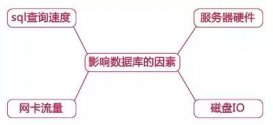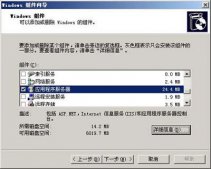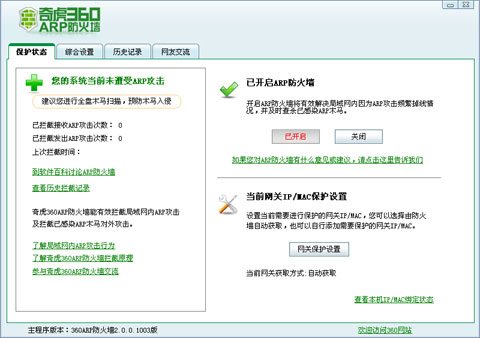一、創建數據庫:
|
1
|
create data data _name; |
php中創建數據庫的兩種方法:(mysql_create_db(),mysql_query())
|
1
2
3
4
5
6
7
|
$conn = mysql_connect(“localhost”,”username”,”password”) ordie ( “could not connect to localhost”);mysql_create_db(“data _name”) ordie (“could not create data ”);$string = “create data data _name”;mysql_query( $string) ordie (mysql_error()); |
二、選定數據庫
在創建表之前,必須要選定要創建的表所在的數據庫
選定數據庫:
通過命令行客戶端:
|
1
|
use data _name |
通過
|
1
|
php: mysql_select_db() |
|
1
2
3
4
|
$conn = mysql_connect(“localhost”,”username”,”password”) ordie ( “could not connect to localhost”);mysql_select_db(“test”,$conn) ordie (“could not select data ”); |
三、創建表
|
1
|
create table table_name |
如:
|
1
2
3
4
5
6
7
8
|
create table table_name(column_1 column_type column attributes,column_2 column_type column attributes,column_3 column_type column attributes,primary key (column_name),index index_name(column_name)) |
在命令行客戶端需要鍵入整個命令
在php中使用,mysql_query()函數
如:
|
1
2
3
4
5
6
7
8
9
|
$conn = mysql_connect(“localhost”,”username”,”password”) ordie ( “could not connect to localhost”);mysql_select_db(“test”,$conn) ordie (“could not select data ”);$query = “create table my_table (col_1 int not null primary key, col_2 text )”;mysql_query($query) ordie (mysql_error()); |
四、創建索引
|
1
|
index index_name(indexed_column) |
五、表的類型
ISAM MyISAM BDB Heap
聲明表類型的語法:
|
1
2
|
create table table_name type=table_type(col_name column attribute); |
默認使用MyISAM
六、修改表
|
1
|
alter table table_name |
更改表名
|
1
|
alter table table_name rename new_table_name |
或者(高版本中)
|
1
|
rename table_name to new_table_name |
添加和刪除列
添加列:
|
1
|
alter table table_name add column column_name colomn attributes |
例如:
|
1
|
alter table my_table add column my_column text not null |
first 指定插入的列位于表的第一列
after 把新列放在已經存在的列的后面
例如:
|
1
2
|
alter table my_table add column my_next_col text not null firstalter table my_table add column my_next_col text not null after my_other _column |
刪除列:
|
1
|
alter table table_name drop column column name |
添加和刪除索引:
|
1
2
3
4
|
alter table table_name add index index_name (column_name1,column_name2,……)alter table table_name add unique index_name (column_name)alter table table_name add primary key(my_column)alter table table_name drop index index_name |
如:
|
1
|
alter table_name test10 drop primary key |
更改列定義:
用change或是modify命令可以更改列的名稱或是屬性。要更改列的名稱,還必須重新定義列的屬性。例如:
|
1
|
alter table table_name change original_column_name new_column_name int not null |
注意:必須要重新定義列的屬性!!!
|
1
|
alter table table_name modify col_1 clo_1 varchar(200) |
七、向表中輸入信息(insert)
|
1
2
|
insert into table_name (column_1,column_2,column_3,…..)values (value1,value2,value3,……) |
如果要存入字符串,則需要使用單引號“'”將字符串括起來,但是需要注意字符的轉意
如:
|
1
|
insert into table_name (text_col,int_col) value (\'hello world\',1) |
需要轉義的字符有:單引號' 雙引號” 反斜杠\ 百分號% 下劃線_
可以連續使用兩個單引號轉義單引號
八、updata語句
|
1
|
updata table_name set col__1=vaule_1,col_1=vaule_1 where col=vaule |
where部分可以有任何比較運算符
如:
table folks
id fname iname salary
1 Don Ho 25000
2 Don Corleone 800000
3 Don Juan 32000
4 Don Johnson 44500
updata folks set fname='Vito' where id=2
updata folks set fname='Vito' where fname='Don'
updata folks set salary=50000 where salary<50000
九、刪除表、數據庫
|
1
2
|
drop table table_namedrop data data _name |
在php中可以通過mysql_query()函數使用drop table命令
在php中刪除數據庫需要使用mysql_drop_db()函數
十、列出數據庫中所有可用表(show tables)
注意:使用該命前必須先選定數據庫
在php中,可以使用mysql_list_tables()得到表中的清單
十一、查看列的屬性和類型
|
1
2
|
show columns from table_nameshow fields from table_name |
使用mysql_field_name()、mysql_field_type()、mysql_field_len()可以得到類似信息!
十二、基本的select語句
要求指出進行選擇的表,以及要求的列名稱。若要選定所有的列,可用*代表所有的字段名
|
1
|
select column_1,column_2,column_3 from table_name |
或者
|
1
|
select * from table_name |
用mysql_query()可向Mysql發送查詢
十三、where子句
限制從查詢(select)返回的記錄行
|
1
|
select * from table_name where user_id = 2 |
如果要對存儲字符串(char、varchar等類型)的列進行比較,就需要在where子句中用單引號把要比較的字符串括起來
如:
|
1
|
select * from users where city = ‘San Francisco' |
通過向where子句添加and或是or,可以一次比較幾個運算符
|
1
2
|
select * from users where userid=1 or city='San Francisco'select 8 from users where state='CA' and city='San Francisco' |
注意:空值不能和表中的任何運算符比較,對于空值,需要使用is null或是is not null謂詞
|
1
|
select * from users where zip!='1111′ or zip='1111′ or zip is null |
如果要找到包含任何值(除空值以外)的所有記錄,可以
|
1
|
select * from table_name where zip is not null |
十四、使用distinct
當使用distinct時,Mysql引擎將刪除有一樣結果的行。
|
1
|
select distinct city,state from users where state='CA' |
十五、使用between
使用between可以選擇在某個范圍內的值,between可用于數字,日期,文本字符串。
如:
|
1
2
|
select * from users where lastchanged between 20000614000000 and 20000614235959select * from users where lname between ‘a' and ‘m' |
十六、使用in/not in
若某列可能返回好幾個可能的值,就可以使用in謂詞
|
1
|
select * from users where state='RI' or state='NH' or state='VT' or state='MA' or state='ME' |
可改寫為:
|
1
|
select * from users where state in (‘RI','NH','VY','MA','ME') |
如果要達到相同的結果,但結果集相反,可使用not in 謂詞
|
1
|
select * from user where state not in (‘RI','NH','VT','MA','ME') |
十七、使用like
如果需要使用通配符,則要使用like
|
1
2
|
select * from users where fname like ‘Dan%' %匹配零個字符select * from users where fname like ‘J___' 匹配以J開頭的任意三字母詞 |
Mysql中like不區分字母大小寫
十八、order by
order by語句可以指定查詢中返回的行的順序,可對任意列類型排序,通過在末尾放置asc或是desc以設置按升序或是降序排列,如果不設置,默認使用asc
|
1
|
select * from users order by lname,fname |
可以按照需要根據任意多的列排序,也可以混合使用asc和desc
|
1
|
select * from users order by lname asc, fname desc |
十九、limit
limit限制從查詢中返回的行數,可以指定開始的行數和希望返回的行數
得到表中的前5行:
|
1
2
|
select * from users limit 0,5 select * from users order by lname,fname limit 0,5 |
得到表的第二個5行:
|
1
|
select * from users limit 5,5 |
二十、group by 與聚合函數
使用group by后Mysql就能創建一個臨時表,記錄下符合準則的行與列的所有信息
count() 計算每個集合中的行數
|
1
|
select state,count(*) from users group by state |
*號指示應該計算集合中的所有行
|
1
|
select count(*) from users |
計算表中所有的行數
可以在任何函數或列名后使用單詞as,然后指定一個作為別名的名稱。如果需要的列名超過一個單詞,就要使用單引號把文本字符串括起來
sum() 返回給定列的數目
min() 得到每個集合中的最小值
max() 得到每個集合中的最大值
avg() 返回集合的品均值
having
限制通過group by顯示的行,where子句顯示在group by中使用的行,having子句只限制顯示的行。
二十一、連接表
在select句的from部分必須列出所有要連接的表,在where部分必須顯示連接所用的字段。
|
1
|
select * from companies,contacts where companies.company_ID=contacts.company_ID |
當對一個字段名的引用不明確時,需要使用table_name.column_name語法指定字段來自于哪個表
二十二、多表連接
在select后面添加額外的列,在from子句中添加額外的表,在where子句中添加額外的join參數–>














